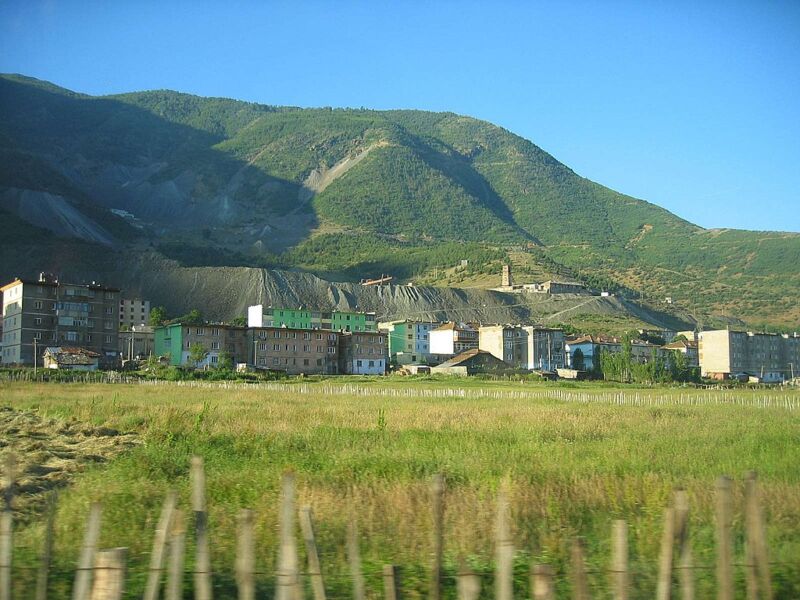“The search for geologic hydrogen today is where the search for oil was back in the 19th century—we’re just starting to understand how this works,” said Frédéric-Victor Donzé, a geologist at Université Grenoble Alpes. Donzé is part of a team of geoscientists studying a site at Bulqizë in Albania where miners at one of the world’s largest chromite mines may have accidentally drilled into a hydrogen reservoir.
The question Donzé and his team want to tackle is whether hydrogen has a parallel geological system with huge subsurface reservoirs that could be extracted the way we extract oil. “Bulqizë is a reference case. For the first time, we have real data. We have a proof,” Donzé said.
Greenish energy source
Water is the only byproduct of burning hydrogen, which makes it a potential go-to green energy source. The problem is that the vast majority of the 96 million tons of hydrogen we make each year comes from processing methane, and that does release greenhouse gases. Lots of them. “There are green ways to produce hydrogen, but the cost of processing methane is lower. This is why we are looking for alternatives,” Donzé said.
And the key to one of those alternatives may be buried in the Bulqizë mine. Chromite, an ore that contains lots of chromium, has been mined at Bulqizë since the 1980s. The mining operation was going smoothly until 2007, when the miners drilled through a fault, a discontinuity in the rocks. “Then they started to have explosions. In the mine, they had a small electric train, and there were sparks flying, and then… boom,” Donzé said. At first, Bulqizë management thought the cause was methane, the usual culprit of mining accidents. But it wasn’t.
Hydrogen at fault
The mine was bought by a Chinese company in 2017, and the new owners immediately sent their engineering teams to deal with explosions. They did measurements and found the hydrogen concentration in the mine’s galleries was around 1–2 percent. It only needs to be at 0.4–0.5 percent for the atmosphere to become explosive. “They also found the hydrogen was coming from the fault drilled through back in 2007. Unfortunately, one of the explosions happened when the engineering team was down there. Three or four people died,” Donzé said.
It turned out that over 200 tons of hydrogen was released from the Bulqizë mine each year. Donzé’s team went there to figure out where all this hydrogen was coming from.
The rocks did not contain enough hydrogen to reach that sort of flow rate. One possible explanation is the hydrogen being released as a product of an ongoing geological process called serpentinization. “But for this to happen, the temperature in the mine would need to reach 200–300 degrees Celsius, and even then, it would not produce 200 tons per year,” said Donzé. “So the most probable was the third option—that we have a reservoir,” he added.
“Probable,” of course, is far from certain.
The question of purity
“The problem is you hear about hydrogen reservoirs in the media, millions of tons of hydrogen, but this is always purely speculative,” Donzé said. In 2023, Ars reported on a reservoir at a closed coal mine in Lorraine, France. The estimated amount of hydrogen stored there was 46 million tons.
“I called one of my colleagues in Lorraine to find out what was going on,” Donzé explained. “He told me hydrogen was probably not coming from the coal itself but from the siderite, carbonates containing iron, that were beneath the coal. Plus, it was not just hydrogen but a mix of hydrogen and methane.”
Both hydrogen and methane were dissolved in water used to flood the mine. “So you degas the water and end up with roughly five percent hydrogen and 95 percent methane. What do you do with the methane? Is this still green energy? You tell me,” Donzé said.
Bulqizë was entirely different. The gas pushed out of the Bulqizë mine is 84 percent hydrogen, one of the highest concentrations on record. Moreover, the hydrogen was not dissolved in water—it bubbled through Bulqizë’s underground pools, making them look like a jacuzzi. “There are sites like Lorraine in Turkey, there is one in Oman, but [the gas there is] not pure hydrogen,” Donzé said.
So are there other places like Bulqizë?
Hydrogen recipe
“What puzzles me here is that oilers have already drilled everywhere in the world looking for oil and gas. There were millions of boreholes all over the place, and who really reported massive amounts of hydrogen stored in a big reservoir? Nobody. This is the problem,” Donzé said.
One potential explanation is that the drillers were targeting oil, not hydrogen. Perhaps if we had a list of telltale signs to look for to find hydrogen deposits, we could find them somewhere. “We haven’t published that yet, but those telltale signs are exactly what our next paper will be about. What we found in Bulqizë is the recipe, the main components of the geological configuration that is likely to hold geological hydrogen,” Donzé said.
So here’s the list. The first thing to look for is ophiolite, a remnant of oceanic crust formed roughly 100 million years ago that has been uplifted by tectonic changes and made part of the continental crust. In Europe, an ophiolite massif extends for over 3,000 kilometers from Turkey to Slovenia. But the rock type alone won’t cut it. “Look for specific types of ophiolite: harzburgite, dunite, and the one with the ore—chromite. I would look for places that have all three,” Donzé said.
So Donzé’s team got busy looking for such places, and they found one. “There is a mine in Ural, central Russia, that has the exact same geological configuration as Bulqizë: harzburgite, dunite, and chromite,” said Donzé. “And guess what. They have a problem with explosions.”
Science, 2024. DOI: 10.1126/science.adk9099
Jacek Krywko is a science and technology writer based in Olsztyn, Poland. He covers space exploration and artificial intelligence research.

